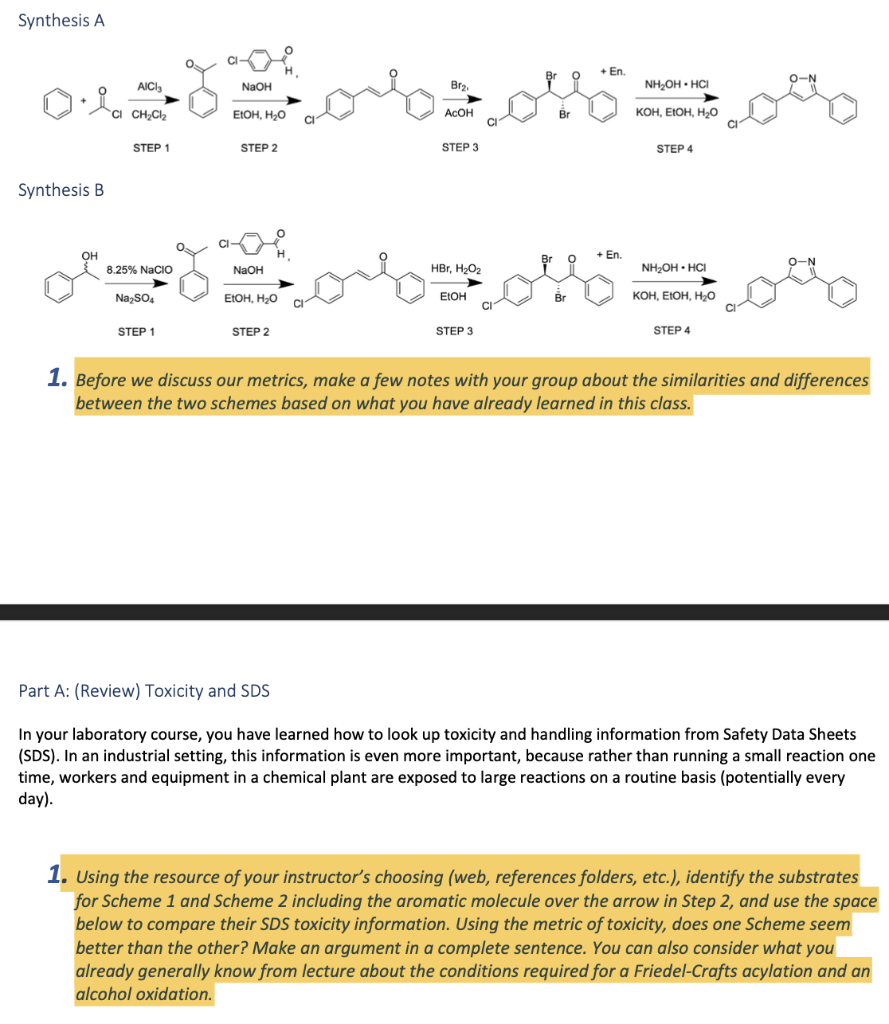Home /
Expert Answers /
Chemistry /
reagents-that-convert-alkene-to-alcohol-gt-1-bh3-then-2-h2o2-ho-1-hg-oac-2-then-2-nabh4-h2o-pa493
(Solved): reagents that convert alkene to alcohol => 1)BH3 then 2)H2O2, HO- ; 1)Hg(OAc)2 then 2)NaBH4 ; H2O ...
reagents that convert alkene to alcohol => 1)BH3 then 2)H2O2, HO- ; 1)Hg(OAc)2 then 2)NaBH4 ; H2O2 with H2SO4
^^please answer this first
1. In 1-2 sentences, compare the ways the different sets of reagents you listed in #1. Then, brainstorm an alkene that gives the same alcohol with all three methods and one that gives a different alcohol product with each of the three methods.
Synthesis A AICI NH?OH-HCI NaOH Br? C? CH?CH? EtOH, H?O ACOH KOH, EIOH, H2O STEP 1 STEP 2 STEP 3 STEP 4 Synthesis B O.. ????? ????? ?? OH HBr, H?O? NH?OH-HCI 8.25% NaCIO NaOH l EtOH KOH, EIOH, H?O Na?SO4 EtOH, H?O STEP 1 STEP 4 STEP 2 STEP 3 1. Before we discuss our metrics, make a few notes with your group about the similarities and differences between the two schemes based on what you have already learned in this class. Part A: (Review) Toxicity and SDS In your laboratory course, you have learned how to look up toxicity and handling information from Safety Data Sheets (SDS). In an industrial setting, this information is even more important, because rather than running a small reaction one time, workers and equipment in a chemical plant are exposed to large reactions on a routine basis (potentially every day). 1. Using the resource of your instructor's choosing (web, references folders, etc.), identify the substrates for Scheme 1 and Scheme 2 including the aromatic molecule over the arrow in Step 2, and use the space below to compare their SDS toxicity information. Using the metric of toxicity, does one Scheme seem better than the other? Make an argument in a complete sentence. You can also consider what you already generally know from lecture about the conditions required for a Friedel-Crafts acylation and an alcohol oxidation. + En. + En.

